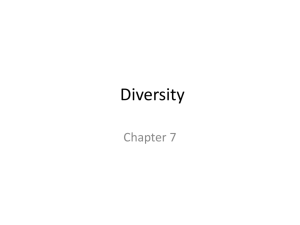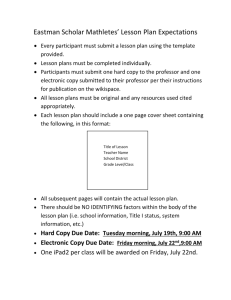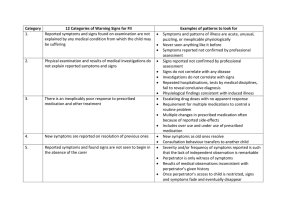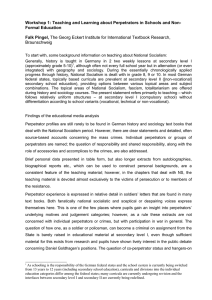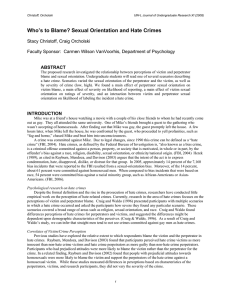Works Cited Page
advertisement
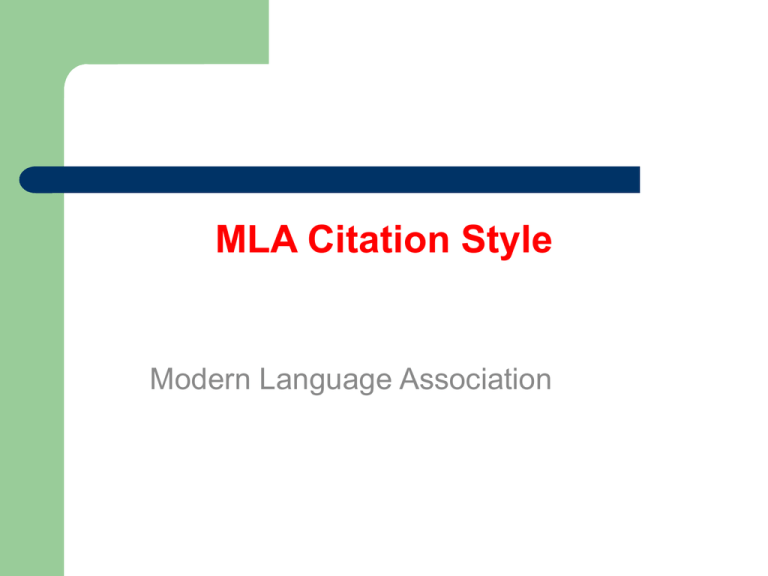
MLA Citation Style Modern Language Association What you already know (but we’ll remind you just in case!) What is plagiarism? “presenting as your own the ideas, opinions or work of others whether copied from source material, purchased, or otherwise obtained without giving proper credit through documentation.” FHS Academic Policy on Plagiarism and Obtaining an Unfair Advantage, 2007-2008 Handbook How do I avoid plagiarism? Do your own work! Take accurate notes, always keeping track of your sources Use direct quotes when needed Paraphrase carefully Include an accurate works cited or bibliography page with every assignment What is a quotation? Exact words of an author Copied word for word When should I use a quotation? You want to add the power of an author’s words to support your argument You want to disagree with an author’s argument You want to highlight powerful phrases used by an author What is a paraphrase? Rephrasing the words of an author into your own words Often shorter than the original When should I paraphrase? You want to avoid overusing quotations You want to use your own voice to present information What is a summary? Taking key information from one or more sources without including detail Always significantly shorter than the original(s) When should I summarize? You want to establish background or offer an overview of a topic You want to describe common knowledge (from several sources) about a topic When do I need to include a citation? After every Quotation Opinion that is not your own Statement of fact… Except … when you’re presenting “common knowledge” You knew the information before you started researching the topic The same information is provided in every source The information is general rather than specific How do I cite using MLA style? Two parts: Parenthetical citations Works cited What would an example look like? “Hate crimes are typically excessively brutal, and quite often they are carried out in a random fashion against strangers…” (Eastman 362). If your cited material runs to more than one page, give the range of pages (Eastman 362-363). *Use no punctuation between name & page # What’s different in this example? Eastman suggests that “Hate crimes are typically excessively brutal, and quite often they are carried out in a random fashion against strangers…” (362). Note: the author’s name is not included in the citation when you use a signal phrase. What if I can’t find an author? As of 2001, at least three hundred towns and municipalities had considered legislation regulating use of cell phones while driving (“Lawmakers” 2). What does “Lawmakers” refer to? Caution: Do detective work before you assume a web source doesn’t have an author. The name may appear on another page, such as the home page. What if I can’t find a page number? You may omit page number if work lacks page numbers – as with many web sources. PDF files provide “stable” page numbers, so you should include those numbers when available. What if there is more than one author? “Hate crimes are often the result of either an individual perpetrator’s perspective or of a larger set of societal attitudes” (Smith and London 404). What if I use more than one work by an author? Hate crimes are often the result of either an individual perpetrator’s perspective or of a larger set of societal attitudes. For example, sometimes perpetrators are motivated by a bigoted attitude toward a particular group an idea that may be reinforced by society. Other times the perpetrator may simply be looking for excitement (Eastman “Evolution of Hate Crimes” 362). What if I have two authors with the same last name Include an initial for the author to clarify which author wrote the article (A. Smith 72) Citation with paraphrases Hate crimes are often the result of either an individual perpetrator’s perspective or of a larger set of societal attitudes (Smith 404). For example, sometimes perpetrators are motivated by a bigoted attitude toward a particular group - an idea that may be reinforced by society. Other times the perpetrator may simply be looking for excitement (Eastman 362). Or try this… Hate crimes are often the result of either an individual perpetrator’s perspective or of a larger set of societal attitudes. For example, Eastman’s research showed that sometimes perpetrators are motivated by a bigoted attitude toward a particular group - an idea that may be reinforced by society. Other times the perpetrator may simply be looking for excitement (362). Works Cited Page Starts on a new page with the title: Works cited centered on page Double-space within and between entries Entry begins at the margin Provide a complete list of all sources made reference to in your paper Does not include any sources not identified in a parenthetical note Organized alphabetically by author’s last name Resources for making citations: Citation Machine available online or at FHS lib website. Be very careful. It is not entirely reliable. OSLIS website available online
